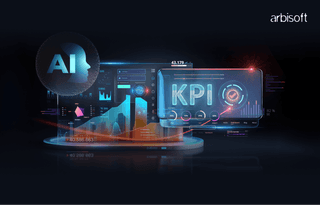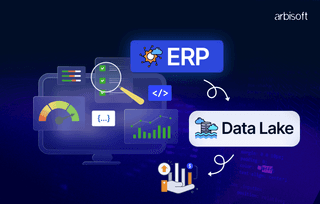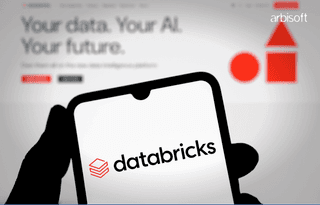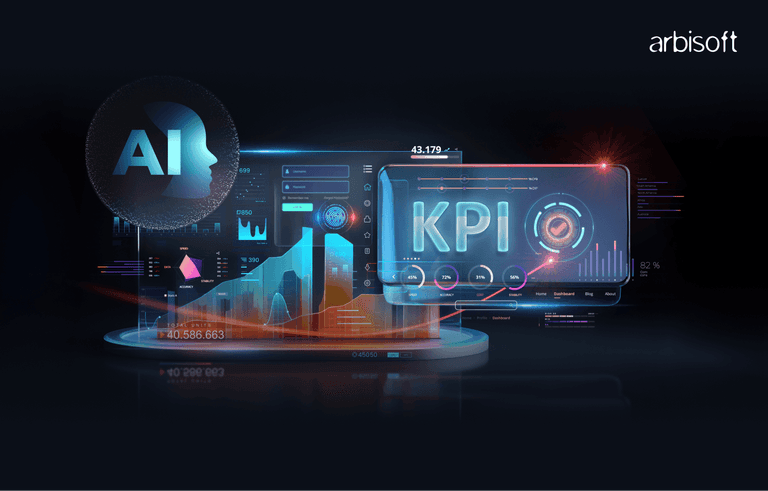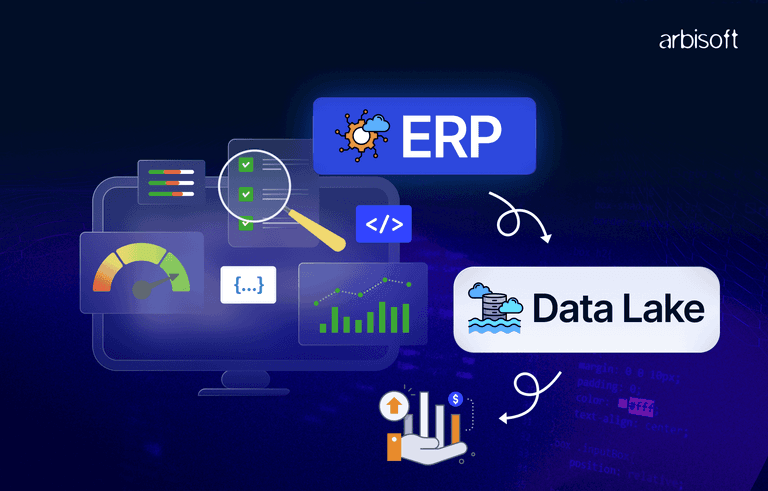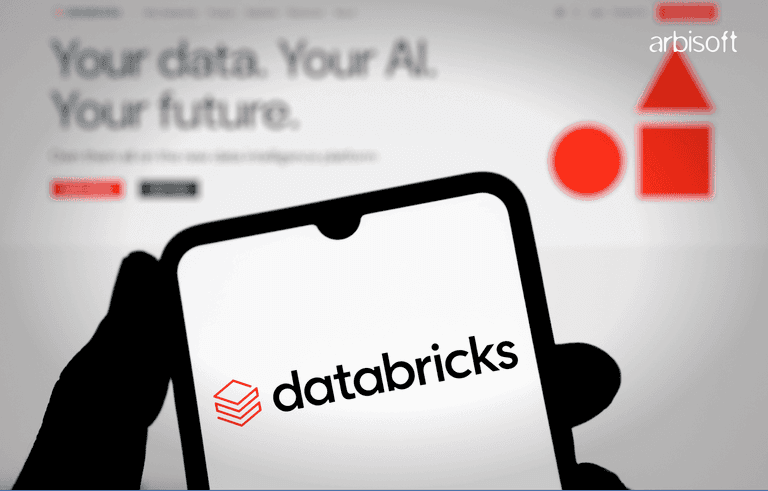We put excellence, value and quality above all - and it shows




A Technology Partnership That Goes Beyond Code

“Arbisoft has been my most trusted technology partner for now over 15 years. Arbisoft has very unique methods of recruiting and training, and the results demonstrate that. They have great teams, great positive attitudes and great communication.”
What Criteria Should CTOs Use to Evaluate and Select an AI Vendor for Predictive Analytics Solutions?

Choosing an AI vendor for predictive analytics is not a task you can rush. It is a strategic move that will affect forecasting accuracy, decision-making speed, and ultimately your company’s bottom line. The right choice will integrate smoothly, scale with your needs, and deliver measurable ROI. The wrong choice will create delays, compatibility headaches, and operational risk.
I have worked with technology leaders who have seen both outcomes. The difference between success and failure lies in following a structured approach and sticking to clear selection criteria.
The Challenge: Navigating the Predictive Analytics Vendor Landscape
We have touched on the stakes. Now let’s look at why finding the right vendor is more complex than it appears.
The Rapid Growth of Predictive Analytics Solutions
Predictive analytics has grown into a multi-billion-dollar global market. In 2025, it has exceeded 25 billion dollars in spending, with top AI vendors competing aggressively. New players enter the market constantly, promising cutting-edge AI predictive analytics capabilities.
For CTOs, this abundance creates decision fatigue. The real challenge is filtering for vendors that can deliver consistent results in your specific operational context. A vendor with impressive results in e-commerce may struggle with manufacturing data or regulated healthcare environments.
Pressure for Digital Transformation and Revenue Acceleration
Boards expect digital transformation projects to deliver results within months, not years. Predictive analytics is often seen as a shortcut to higher revenue, faster decisions, and better forecasting.
Yet many vendors oversell speed and underestimate integration challenges. Without careful selection, you may find yourself locked into a system that technically works but produces unreliable or incomplete insights. That is why vendor evaluation should begin with your specific business requirements, not their marketing narrative.
Pinpointing Core Vendor Evaluation Criteria
We have established the reasons for caution. Let’s move to the vendor selection criteria that will keep you on track.
Scalability and Integration with Existing Infrastructure
Your chosen vendor must handle today’s workloads and future growth. Ask whether they have implemented predictive analytics solutions in environments with data volume and complexity similar to yours.
Review their integration track record. Request a technical walkthrough of how their solution connects to your existing systems. If you rely on a mix of cloud and on-prem infrastructure, ensure their architecture supports both without costly middleware. Poor integration is one of the most expensive mistakes a CTO can make.
Security, Compliance, and Data Accuracy
In predictive analytics, security is not just about protecting data; it is about protecting trust. Your vendor should follow industry-standard encryption practices, undergo regular security audits, and hold relevant compliance certifications for your sector.
Data accuracy underpins every forecast your solution will generate. A strong AI vendor will have documented processes for data validation, model retraining, and bias detection. Without these safeguards, even advanced AI predictive analytics can lead you in the wrong direction.
ROI-Proven Results and Industry Expertise
Look beyond vendor claims to verified performance metrics. Ask for ROI figures from real deployments, not theoretical models. The most relevant case studies are those from companies in your industry, facing similar data challenges.
Industry expertise helps a vendor anticipate obstacles. They will already understand the nuances of your regulatory environment, data sources, and operational workflows. This reduces the risk of long delays during AI implementation.
Essential Steps for Predictive Analytics Vendor Selection
We now know the criteria. Let’s move to the essential steps for predictive analytics vendor selection that bring them into play.
Defining Internal Requirements and Success Metrics
Start with a clear definition of success. Consult IT, data science, compliance, and business leaders to define required features, performance targets, and integration rules.
Quantify your expectations. If your success metric is “reduce forecast error by 15% in 12 months,” document it. This makes vendor comparison easier and prevents scope drift later.
Creating a Vendor Comparison Matrix
A vendor comparison matrix helps transform subjective impressions into objective scores. Include categories such as technical capabilities, scalability, integration effort, security posture, support quality, and cost.
Score each vendor against these categories. A well-maintained matrix also doubles as a justification document for board approval, showing you followed a disciplined vendor evaluation process.
Vendor Benchmarking: Shortlist Development
Benchmarking allows you to compare your shortlisted vendors against market performance. Use independent analyst reports, peer CTO recommendations, and customer reviews.
Pay attention to patterns. If multiple reviews mention slow issue resolution, that is a risk indicator. If a vendor consistently outperforms in your industry, they deserve closer consideration. Benchmarking should end with a shortlist that balances proven capability with cultural and technical fit.
Once you have a shortlist, the next step is verifying whether each vendor truly has the AI expertise they claim. Our guide on assessing the AI expertise of an AI development company before signing a contract breaks down exactly how to separate genuine capability from polished marketing.
Analyzing Technical Capabilities and AI Implementation Support
We have narrowed the list. Now it is time to assess the engine under the hood.
Evaluating Technical Depth and Product Roadmaps
Ask vendors to walk you through their tech stack. Assess whether it supports your existing systems and can adapt to future requirements. Vendors with static product roadmaps risk falling behind. Look for evidence of planned updates, support for emerging standards, and investment in R&D.
A mature AI vendor will have a skilled internal team, not just outsourced contractors. Their technical staff should be able to answer detailed questions on integration, scalability, and security without deferring to marketing materials.
Assessing Support, Maintenance, and Issue Resolution Protocols
When issues arise, the quality of vendor support determines how quickly your operations return to normal. Review their service level agreements for guaranteed response and resolution times. Ask about dedicated account managers, 24/7 support availability, and past incident resolution examples.
A vendor that offers proactive monitoring and regular system health checks will prevent problems before they escalate.
To better understand how predictive analytics solutions work and the business problems they can solve, check out our guide on How leveraging predictive analytics solutions & services can solve a company's most pressing business challenges.
Mitigating Vendor Risks and Lock-In
We have assessed technical fit. Now we must prepare for future flexibility.
Flexibility, Interoperability, and Exit Strategies
A future-proof predictive analytics solution supports open standards, integrates with third-party tools, and does not lock you into proprietary formats. Ask how easily you can migrate data if the partnership ends.
An AI vendor confident in their value will provide an exit strategy upfront. This includes data export formats, timelines, and support for transition. Without this, switching vendors later could become a costly and time-consuming challenge.
Transparency in Contractual Agreements
Contracts should spell out performance obligations, ownership of intellectual property, and contingencies for vendor acquisition or financial instability.
Negotiate clauses that protect your data rights and ensure service continuity. The goal is to eliminate ambiguity, so both sides understand their responsibilities in every scenario.
Engaging Key Stakeholders in the Decision Process
We have addressed vendor risks. Now let’s make sure the decision has full internal backing.
CIO, Head of Data Science, and IT Team Engagement
Involving these leaders early avoids surprises during AI implementation. The CIO will assess alignment with enterprise architecture. The Head of Data Science will evaluate model performance and data workflows. The IT team will confirm integration feasibility and infrastructure impact.
Their combined input ensures that the chosen solution supports both business goals and technical realities.
Managing Procurement and Finance Director Concerns
Procurement will look for competitive pricing, contract flexibility, and risk mitigation. Finance will focus on ROI and budget impact. Present them with a full cost analysis that includes licensing, implementation, maintenance, and scaling costs.
Address potential budget changes by showing payment flexibility and the vendor’s willingness to adapt contract terms if priorities shift.
For CTOs looking to fill skill gaps quickly without long recruitment delays, the Arbisoft team augmentation engagement model offers a cost-effective way to scale predictive analytics projects with on-demand expertise.
Making the Final Vendor Selection
We have aligned stakeholders. The final step is to validate performance and make the decision.
Conducting Demos and Proof-of-Concepts
Real-world performance is best judged with your own data. Request a proof-of-concept that runs through your core use cases. This will expose integration challenges, processing speeds, and model accuracy.
If the proof-of-concept delivers strong results under your real operating conditions, you have a solid foundation for moving forward.
Reference Checks and Success Record Validation
Contact multiple current clients, ideally in your industry. Ask about the vendor’s responsiveness, system reliability, and whether promised ROI was achieved.
References are often candid about issues, so probe for areas that required workarounds or additional resources. If existing clients would enthusiastically work with the vendor again, that is a positive indicator.
Scoring and Decision Framework Alignment
Return to your vendor evaluation criteria and vendor comparison matrix. Confirm the leading vendor meets both objective scores and subjective fit. This is where structured evaluation prevents last-minute changes based on personal preference alone.
Selecting the right AI vendor for predictive analytics solutions requires clarity, discipline, and a commitment to thorough evaluation. By combining clear internal requirements, rigorous benchmarking, technical validation, and stakeholder alignment, you set your organization up for measurable results instead of costly setbacks.
For a proven track record in delivering enterprise-grade predictive analytics, explore Arbisoft’s predictive analysis solutions to see how actionable intelligence can transform your data into measurable business value.
FAQs
1. Why is vendor selection so critical for predictive analytics projects?
Because the right vendor will improve forecasting accuracy, accelerate decision-making, and scale with your business, while the wrong one can cause delays, integration issues, and poor ROI.
2. What makes choosing a predictive analytics vendor so challenging?
The market is crowded with vendors claiming advanced capabilities. Many excel in one industry but may not adapt well to another, making it vital to find a provider experienced in your sector and data environment.
3. What are the most important criteria for evaluating predictive analytics vendors?
Key factors include scalability, smooth integration with your existing infrastructure, strong security and compliance standards, proven data accuracy, measurable ROI from past projects, and deep industry expertise.
4. How can I ensure the vendor’s solution integrates with my current systems?
Request a technical walkthrough of their integration process, ask for references from similar infrastructure setups, and confirm support for both cloud and on-prem environments without costly middleware.
5. What security and compliance measures should I expect?
Look for encryption standards, regular third-party security audits, and compliance certifications relevant to your industry (such as HIPAA, GDPR, or SOC 2).
6. How do I verify a vendor’s ROI claims?
Ask for real-world case studies from companies similar to yours, focusing on documented performance metrics, reduced forecast error, or increased operational efficiency.








